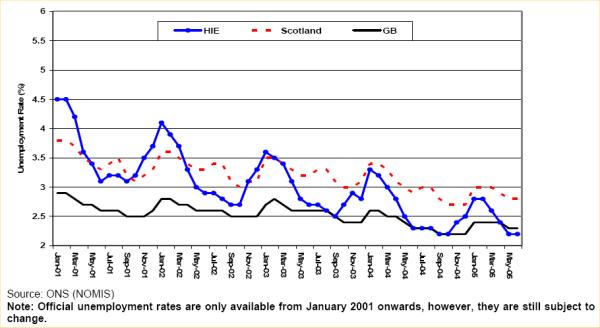|
June 2005
UNEMPLOYMENT DIGEST
The methodology used by the Office for National Statistics (ONS) to
calculate unemployment rates has been changed. The new method expresses
the number of claimants as a percentage of the estimated population of
working age residents in an area. The population of working age is defined
as those aged 16 to 59 for women and 16 to 64 for men.
The population of working age
residents has been derived from the 2001 Census data. All of the figures
in this update adopt the new methodology. On average the new proportions
are around a fifth smaller than the traditional rates, but there are
variations around this (comparable figures are not available for previous
years). The 2001 figures have been used to calculate unemployment rates
for 2002 and 2003. These rates will be amended on release of new
population estimates from the GRO(s).
SUMMARY
The June 2005 unemployment figures were released on 13th July 2005.
During the month, May 2005 to June 2005, the number of people claiming
unemployment benefit in Great Britain fell by 1.1%, from 839,547 to
829,994 (9,553 claimants). This figure is higher than the same period last
year, where the number of claimants stood at 810,413, an increase 19,581
claimants. The number of people claiming unemployment benefit in
Scotland also fell during the month, falling 1.6%, from 88,491 to 87,044
(1,447 claimants). This figure is lower than the same period last year, a
decrease of 5.8% (5,362 claimants).
As with GB & Scotland, unemployment
in the HIE area fell during the month, falling 1.2% from 5,745 to 5,676
claimants. The figure is lower than the same period last year, a decrease
of 6.0% (363 claimants). |




